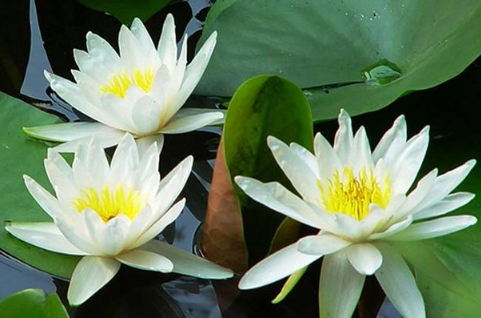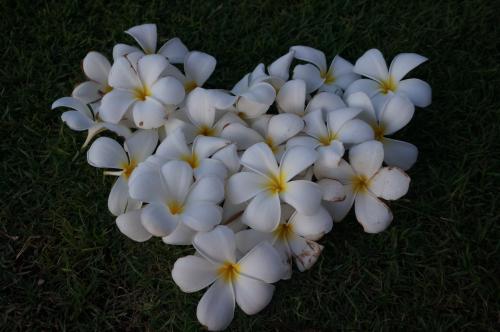Aquaculture methods of water lilies
1. Prepare seeds, nutrient solutions, and water culture utensils. All the selected seeds must have small mouths, otherwise the seeds will not germinate.
two。 Soak the selected seeds in water, and the water may be turbid after one day, so change to clean water and soak for three days.

3. Soaked seeds will sprout, but ungerminated seeds can not germinate and can be thrown away.
4. Then change the clean water and add more than a dozen drops of nutrient solution to the water. After 3 days, the small buds will gradually grow up, and they will be able to drop more than ten drops of nutrient solution after 3 days.
5. After a period of time, small buds grow into leaves, which can be fixed or not fixed by putting some pebbles at the bottom of the water. Then the seeds will grow more leaves and blossom slowly.
Culture methods of water lilies
Propagation methods of water lily seeds
The seeds are poured into a container filled with water and placed in 25 ℃-30 ℃ warm water to accelerate germination. The seeds can germinate in about 2 weeks by changing water every day. When the seedlings grow young roots, they are moved into small pots for planting. After planting, put the small basin into the water tank with a water depth of 1 cm to submerge the young leaves. When the temperature rises to 17 ℃ in April, it can be moved to open-air culture. Change the basin 2-3 times with the growth of the new leaf, and finally plant it in the jar or basin whose diameter is not larger than 35cm.
Pot method of Rhizome
Potted plants can be planted in pots or pots with an inner diameter of 40 cm and a depth of about 60 cm from the end of March to the beginning of April.
When planting, the river mud of 3-4 cm is now placed at the bottom of the pot, and the filling should not be excessive. Usually, 20-25 cm of water injection space should be left in the upper part, and then the top bud of the cut rhizome should be buried upward under the soil surface, and then slightly increase the cover of the soil. the depth of covering soil should be flush with the top bud, with 5-7 sections per pot.
When just planting, do not inject water too deeply, it is appropriate to 2-3 cm, in order to improve the water temperature, and then put the pot in a well-ventilated, sunny place for maintenance. After that, the water level gradually deepened with the growth of the plant.
Summer irrigation depth of about 25-35 cm is appropriate, and often maintain this depth. Remove the residual flowers and withered leaves in time after flowering to prevent the consumption of nutrients and keep them clean and beautiful. 2-3 times of fertilizer should be added during the growth period.
Pour the water out of the basin before the cold dew festival to prevent overwintering in a cold room of about 3 ℃ and keep the basin soil moist without freezing. The Spring Equinox combined with changing the basin and soil before and after applying appropriate amount of rotten bean cake juice as base fertilizer.
Daily management and maintenance
Water lilies belong to long sunshine plants, the planting place should be well lit and well ventilated. Water lilies have different requirements for water level at different growth stages.
The initial water level is slightly below the edge of the basin, and gradually increases with the growth of the leaves. In the early growth stage of potted water lilies, the base fertilizer should be sufficient, there is no need to topdressing, and quick-acting potassium dihydrogen phosphate should be applied at flowering stage.
Matters needing attention
Attention should be paid to the removal of weeds, withered leaves and surface algae throughout the growing season. Too much algae, can spray 0.3-0.5% of the solution, once every half a month, several times in a row can play a certain control role.
The method of cultivating water lilies matters needing attention in cultivating water lilies
Water lily is a beautiful ornamental plant, which can be cultivated in pots at home, but many people do not know much about the breeding methods of water lilies and do not know what to pay attention to, so that they can always raise them well when raising water lilies. Today, I will write out the methods of cultivating water lilies and share them with you. At the same time, I will also tell you what to pay attention to in cultivating water lilies.
The method of cultivating water lilies matters needing attention in cultivating water lilies
1. Flowerpots and pots of water lilies
Usually, when raising water lilies, it is best to choose the kind of flowerpots that open outward, which is conducive to the growth of water lilies leaves, and has a significant impact on the time of water lilies blooming. The larger the opening of the flowerpot, the shorter the interval between flowering. The basin soil for breeding water lilies should choose clay with high viscosity or Yangmingshan soil.
2. Planting of water lilies
Usually, when planting water lilies, you should put some base fertilizer in the flowerpot, but not up to much, otherwise the roots will rot, put the base fertilizer into 1/3 of the soil, and then bury the water lily bulbs in the soil to let the buds grow. After planting, move it in a sunny environment, and then pour enough water to let it grow naturally.
3. Fertilizer management of water lilies.
Water lily is a kind of plant that likes to be fertilized. During its normal growth, it is necessary to top fertilizer every half a month or 20 days. You can choose root fertilizer with a longer duration when topdressing, but after entering September, do not fertilize water lilies any more, because it is already in autumn and water lilies will soon be able to carry out dormancy period. At this time, topdressing will cause its roots to rot.
- Prev

Matters needing attention in planting bowl lotus
1. Light bowl lotus can not be nurtured indoors for a long time, otherwise it will grow slowly, so it is necessary to receive more light outdoors, so the plant will grow more vigorously. two。 Fertilizer bowl lotus likes fertilizer, lack of fertilizer plants will lack vitality, before planting should add a small amount of mature cake and other base fertilizer. Although the bowl lotus likes to be fat
- Next

Planting method of egg flower
The first method, the cuttage method, has a high survival rate. Generally, the sturdy branches are selected and divided into several sections. The white milk from the branches is dried and then inserted into the soil to keep the soil moist. Finally, just wait for the egg flowers to take root.
Related
- Fuxing push coffee new agricultural production and marketing class: lack of small-scale processing plants
- Jujube rice field leisure farm deep ploughing Yilan for five years to create a space for organic food and play
- Nongyu Farm-A trial of organic papaya for brave women with advanced technology
- Four points for attention in the prevention and control of diseases and insect pests of edible fungi
- How to add nutrient solution to Edible Fungi
- Is there any good way to control edible fungus mites?
- Open Inoculation Technology of Edible Fungi
- Is there any clever way to use fertilizer for edible fungus in winter?
- What agents are used to kill the pathogens of edible fungi in the mushroom shed?
- Rapid drying of Edible Fungi

